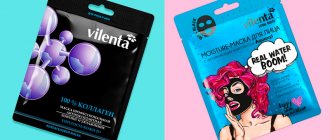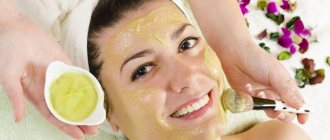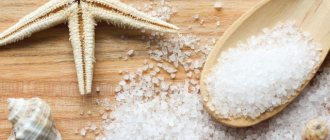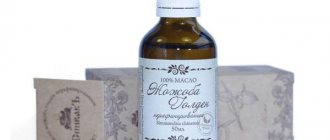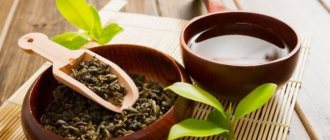How glycerin is obtained and its properties
Glycerin is the simplest trihydric alcohol obtained by the decomposition of fats. It is odorless and colorless, tastes sweet, and feels like thick syrup. Glycerin easily dissolves in alcohol and water and is insoluble in fatty and essential oils.
For cosmetic purposes, use diluted glycerin or in pure form. It is obtained from both natural and synthetic components; this does not affect the quality of the original product.
Glycerin is widely used in medicine and cosmetology due to its properties.
- Hydration. After application to the skin, it begins to absorb moisture and release it to the skin. Glycerin can be used for this purpose only when the air humidity is high, since in a dry climate it itself draws moisture from your skin.
- Protection. It forms an invisible thin film that effectively protects the skin from the negative effects of climate for a long time.
- Does not cause allergies. Glycerin can be used by people with sensitive skin, as it does not cause irritation, redness or rashes.
- Medicinal properties for eczema. Glycerin can increase the therapeutic effect of medications to prevent eczema and at the same time reduce their negative impact on the skin.
- Cleansing. Glycerin removes various impurities and dust from the skin well.
Effect of glycerin in hand cream
Moisturizing glycerin cream is used to increase lipid balance in cells.
This way, metabolic processes in the skin are activated. Glycerin, which is part of the product, creates a protective film that prevents moisture loss.
The product smooths out wrinkles, eliminates the feeling of tightness and flaking, and with regular use it participates in rejuvenation.
IMPORTANT!
Myths say: when using glycerin, the likelihood of drying out the skin increases. This is not true: the substance is hygroscopic (retains moisture) and is chemically stable. Glycerin can act as a solvent to reduce the viscosity of ingredients. Prevents harmful environmental influences. Glycerin components are involved in the work of proteins that redirect fluid from the deep layers of the epidermis to the surface.
When choosing preparations without glycerin, it is worth considering that instead of this component the composition will contain mineral oils, which will not bring any benefit.
When is glycerin harmful to the skin of your hands?
If glycerin is used incorrectly, it can harm the skin. Despite the fact that one of its main properties is moisturizing, glycerin can dry out the skin in the following conditions:
- the air is dry (its humidity is less than 65%). If there is little moisture in the air, glycerin, due to its hygroscopic properties, begins to absorb it from the skin, which leads to peeling and cracks. In winter, it is generally better to avoid using glycerin and creams based on it;
- it is used in pure form or as part of a cosmetic product containing glycerin more than 7%. To find out the amount of glycerin in a hand cream, you need to read the composition: the closer it is to the end of the list, the less its amount.
Derivatives
There are two different glyceryl stearate derivatives used in cosmetics. These are Glyceryl Stearate SE and the second substance is Glyceryl Stearate Citrate. Let's look at each of them in more detail.
S.E.
Most often you can find this name on the packaging of cosmetic products - Glyceryl Stearate SE. This is one of the most common emulsifiers. The letters SE indicate that the substance is capable of emulsifying without any foreign additives or inclusions and without additional chemical elements.
Most often found in cosmetics, where you need to mix water and oil into a single whole. In appearance, the substance resembles granules. Has an excellent moisturizing and softening effect. Not used in food production.
Citrate
This is the second derivative. Also used in cosmetics. This compound contains oils and citric acid. This is where the citrate supplement came from. Studies have proven that it is non-toxic and does not cause any harm to the body.
The only difference between Glyceryl Stearate SE and Glyceryl Stearate Citrate is that the latter has a pronounced lemon aroma.
How to prepare masks and hand creams from glycerin
Glycerin is present in almost all hand care products, regardless of their price. At home, you can make effective glycerin-based masks and creams from inexpensive and readily available ingredients.
Hand masks
- A glycerin mask based on honey is suitable for nourishing and caring for your hands in winter. In a small bowl, mix one part each of honey, glycerin and starch, dilute with three parts water. Apply the mask for 15 minutes and rinse with plain water.
- A mask with olive oil has a rejuvenating and whitening effect. Take a teaspoon each of lemon juice and olive oil, glycerin and oatmeal flour. Add all ingredients in the following order: oatmeal, water, olive oil, lemon juice, glycerin. You should keep the mask on your hands for no more than 20 minutes.
- A mask of yolks and glycerin nourishes the skin and strengthens nails. Mix two yolks, a tablespoon of glycerin and 50 ml of almond or olive oil. The mask is applied to your hands in a thick layer; to enhance the effect, you should wrap your hands in cellophane and a warm towel for 20 minutes. The resulting amount of mask is enough for two uses, so the remaining mixture can be stored in the refrigerator.
Hand creams
- To prevent cracking and peeling of the skin of your hands, infuse chamomile flowers in hot water, a tablespoon per 100 ml of water. Heat 50 g of ghee in a water bath and, slowly stirring it with a spoon, add half a teaspoon of glycerin, 50 ml of chamomile infusion and 30 ml of camphor. Cooled cream should only be stored in the refrigerator for a maximum of two weeks.
- For daily care of hands and nails, mix a tablespoon of 9% vinegar and glycerin, add a teaspoon of base oil (almond, olive, grape seed). Rub this composition into the skin until completely absorbed before going to bed.
- You can achieve a whitening and toning effect using a cream based on lemon juice. It is necessary to squeeze out the juice of two lemons, and infuse their zest in 200 ml of hot water. Add to the resulting lemon juice a teaspoon of vitamin A in an oil solution, honey, glycerin and camphor alcohol, an yolk, 100 g of melted butter and an infusion of lemon zest.
All glycerin-based creams are stored only in the refrigerator, and masks are used immediately after preparation. Daily use of these glycerin-based home remedies makes your skin smooth, velvety and moisturized and your nails strong.
Author - Gordeychuk Vitaly
I would like to share, in my opinion, a very useful article by my colleagues from the magazine and portal Lookbio.ru and their wonderful author, an expert in organic cosmetics Maria Fetisova.
What is glycerin really? Harmful or beneficial? Does our body produce glycerol?!
Benefit or harm: 7 facts about glycerin
“Glycerin is a popular moisturizing ingredient that has gotten a bad rap lately. They accuse it of everything: it is cheap, it dries out the skin, and in general it may be of synthetic origin. Nevertheless, glycerin continues to be used not only in conventional, but also in natural cosmetics. So maybe you just don’t know how to cook it, it’s not so scary? We have collected 7 facts about glycerin that may change your attitude towards this ingredient.
1. Glycerin comes in different forms
Glycerin can be obtained in different ways: synthetically, by fermenting sugar or through the hydrolysis (breakdown) of fats. Fats can be of both plant and animal origin, but vegetable oils are used to produce glycerin, which is used in natural and organic cosmetics.
2. Natural glycerin?
Glycerol is present in all lipids of animal or plant origin, and is obtained through a chemical process (even cooking soap, during which glycerin is formed, is also a chemical process). Therefore, it is incorrect to contrast “natural” glycerin with “chemical” glycerin, as some authors of articles on the RuNet do.
3. Is natural glycerin better than synthetic?
It seems like the answer to this question is yes, doesn't it? However, Dr. Johann W. Vickers in his article says that our body will not be able to distinguish plant glycerin obtained from a biological source from the same glycerin obtained chemically. Of course, there will be other respected people who will argue the opposite. We are not taking sides now. In any case, it is important that the glycerin is highly purified, and that the final product does not contain harmful impurities (which often happens in the case of a synthetic origin of the substance).
Glycerin derived from plant sources is at least better because it is extracted from renewable sources, and if we are talking about certified cosmetics, then less harm to the environment is caused during its production.
4. Glycerin is a cheap humectant
As is the case with mineral oil, which can be both technical and cosmetic, those who write about glycerin as a “cheap ingredient” apparently are not aware that any component can be produced for different purposes, have different degrees purification, different production methods and, as a result, different prices. Of course, it all depends on what you compare it to: a rare algae extract will naturally cost more than glycerin obtained from the highest quality vegetable oil. However, this does not detract from the moisturizing qualities of glycerin or make it a “bad” ingredient just because it is relatively inexpensive.
5. Glycerin is an important component of the water-saving system of the epidermis
The big surprise for glycerol opponents is that our own cells produce endogenous (i.e., “internal”) glycerol, which participates in the water circulation system through aquaporin channels. Aquaporins are water channels in the cell membrane, thanks to which active transport of water and some low-molecular compounds (glycerol, urea) occurs in the epidermis. But in the skin there is also endogenous “external” glycerol, which enters the stratum corneum from sebum.
Ideally, the body itself should produce both “internal” and “external” glycerol for the normal functioning of the entire skin hydration system. But if for some reason the stratum corneum stops receiving endogenous glycerol, then the skin can become dry and rough. In this case, an “external source” can help her - face cream with glycerin.
6. Does glycerin dry out the skin?
Yes, if there are certain conditions for this. Condition number one is dry air. Glycerin is a hygroscopic substance (meaning it can absorb water vapor from the air), so in dry climates with relative humidity less than 65%, it can begin to draw moisture from the intercellular spaces in the skin. Therefore, in winter, when the air in apartments becomes dry, it is not recommended to abuse pure glycerin.
Condition number two is the amount of glycerin in the product. Even if you use a cream with glycerin in winter, but there is only a small amount of it, then nothing bad will happen to your skin. Another thing is that it is impossible to determine the amount of glycerin in the cream - the percentages are not indicated on the packaging. The ingredients are written in descending order of their content in the product, but even this will not reveal the exact percentage of glycerin.
In this case, we can recommend, firstly, to choose a product where glycerin does not occupy the first position in the composition, secondly, apply a cream with glycerin to a slightly damp face, and thirdly, in winter, use a cream with glycerin an hour and a half before going out outside.
7. Glycerin can be everywhere
Glycerin is used not only in cosmetic creams. Food glycerin (additive E422) is used for the preparation of plant extracts, pasta, bread, sweets, soft drinks, and when processing dried fruits. Glycerin has not only moisturizing, but also antiseptic properties, thanks to which it has found use in medical preparations. And, by the way, it is not at all necessary that the glycerin used in processing dried fruits will be of natural origin.”
Thank you, Maria and Lookbio.ru
Beauty, Radiance and useful knowledge to everyone!
Source: https://lookbio.ru/bio-gid/razvenchivaya-mify/polza-ili-vred-7-faktov-o-glicerine/
Vkontakte

